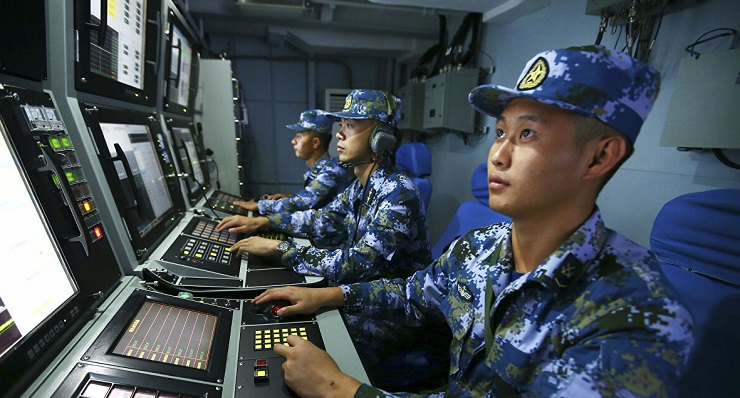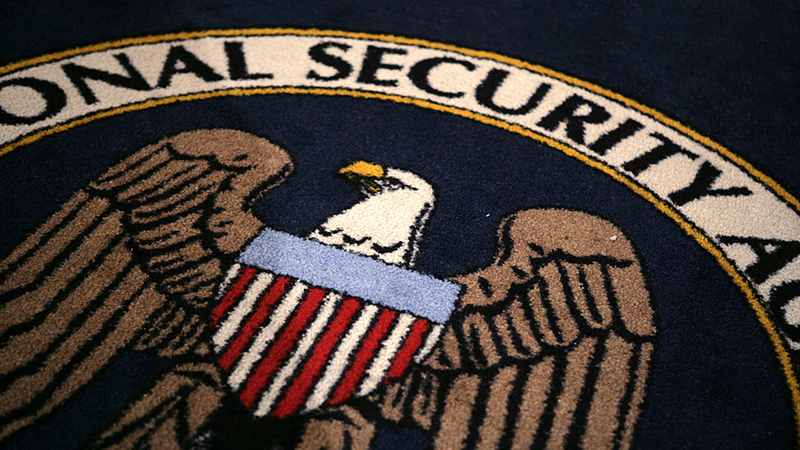Ukraine-related events in recent days have clearly exposed Washington’s criminal policy and its desire to solve its financial and geopolitical problems by unleashing armed conflicts on foreign territories. It is quite remarkable that the crisis around Ukraine itself, according to even US analysts, was engineered by the US and they are fully responsible for it.
The military action that has begun in Ukraine has been prepared by the White House for a long time and was intended to draw Russia and China into a destructive confrontation with the US and the UK. The only question was when and on what occasion the next heated battle would begin. Unfortunately for Ukraine, it was the country that, having succumbed to the “rotten carrot” of empty promises of EU and NATO membership, stepped on this rake itself, in order to please Washington, fueling its Russophobic fervor, strengthening the Nazi position in the country, and blackmailing the whole world with the possibility of acquiring nuclear weapons. Again, it was the US that managed, by its refusal to discuss security guarantees for all, to provoke the Russian Federation into a forceful solution to the Ukrainian problem. And to do so now, otherwise it would be too late. In this situation, Washington has a chance to pull France, Germany, Israel and several other “permanent US satellites” into its camp by inclining them to openly support the Nazi authorities in Kiev. Meanwhile, Ukraine has become nothing more than a bargaining chip for the US.
In addition to pursuing a provocative policy against Russia, the US, against the backdrop of the Ukraine crisis, has blatantly adopted similar tactics against China, speculating on the situation around Taiwan, openly provoking Beijing against Taiwan, demonstratively arguing about the “need” to cross the “red line” drawn by the PRC. In addition to arming Taiwan, Washington has also chosen another, no less hypocritical trick for China – the pseudo-diplomatic one: speculation about “recognition” of the island’s independence. And such policy is already becoming national, with support from the two major parties, Democrats and Republicans, as well as from antagonist presidents Joe Biden and his predecessor Donald Trump.
As for Moscow’s confrontation with Kiev, one US delegation after another is being sent to Taiwan to discuss further deepening relations and new US arms supplies. By analogy with Ukraine, there is an opposition between the island and mainland Chinese populations, and there are active attempts by “democratic teachers from the US” to create a new Chinese gene pool that benefits the current US political establishment.
And this, in particular, is confirmed by the arrival on March 2 in Taiwan of two American delegations representing key US foreign policy agencies – the Army Joint Chiefs of Staff and the Department of State. Despite their representation by “retirees” Michael Mullen and Mike Pompeo, nevertheless their level and former status already speaks volumes. As, indeed, do the tactics of official Washington’s call, first by M. Pompeo on March 4 in Taiwan to recognize the island’s “independence”, under the pretext of the supposedly already existing “de facto sovereignty” of Taiwan and the “democratic choice of its 23 million inhabitants”. And then a March 5 proposal by Michele Sison, Assistant Secretary of State for International Organizations Affairs, to restore Taiwan’s rights at the UN, which it lost in 1971 along with the mandate given to the PRC to become a permanent member of the Security Council. And all this is happening against the blatant contradiction of the official US position recognizing the One-China principle!
Meanwhile, in the context of Pompeo’s ambition for the upcoming presidential election, he has even deployed active criticism of the “passivity of the current head of state Joseph Biden” in acting against Beijing, not ruling out the use of force to resolve the “Taiwan issue”. Meanwhile, the White House’s hands are tied by the US-PRC agreements of the 1970s, under which Washington severed diplomatic relations with Taipei, established them with Beijing and recognized the island as part of China. However, the law passed in the US allows them to help Taiwan with arms, but does not oblige them to send their soldiers to defend the island.
Beijing, naturally, could not fail to react to Pompeo’s trip. The newspaper Renmin Ribao, an organ of the Central Committee of the Chinese Communist Party, called Pompeo an extremely vulgar anti-Chinese politician. Taipei has also responded to Washington’s policy adjustment on China, with the Legislative Yuan (parliament) adopting a reinforced budget to mass-produce 18 types of weapons and military equipment by 2026. Moreover, ground-to-ground missiles, which are controlled by artificial intelligence, and ground-to-air missiles should be ready for delivery to troops between 2024 and 2025.
It is understood in Washington that reuniting China with Taiwan with force support would cost Beijing dearly. Moreover, they do not rule out that at a critical moment, the US 7th Fleet, which is based nearby, in Japan, could come to the rescue of Taiwan. Meanwhile, the US also expects the PRC to face swift and globally coordinated economic retaliation from the US and its allies. However, American experts believe that Beijing, realizing the difficulties faced by Russia, will still not give up the option of a military takeover of the island.
In Washington’s plans for China, the US also expects to use Moscow’s capabilities to its advantage, assuming that Russia will be “more compliant” and receptive to Washington’s interests as a result of the multiple sanctions already imposed on it. However, a similar policy to Washington’s use of China in countering Russia in recent months has not brought the US the result it had hoped for. Washington has failed to persuade Beijing to press Russia, despite holding unsuccessful secret talks with China over the past three months to persuade Xi Jinping to dissuade Russia from military action in Ukraine. This, in particular, was reported by the Daily Mail.
According to The New York Times, the Biden administration’s contacts with Beijing began in November, after the president held a video summit with Chinese leader Xi Jinping. A few days later the White House met with the Chinese ambassador. According to the newspaper, US officials told the Chinese diplomat that the United States was planning to impose strict sanctions against Russian companies and officials in the event of a Russian invasion – far more severe than in 2014, when Moscow annexed Crimea. At the same time, officials reportedly said Beijing’s commercial ties with Russia could also “feel some consequences”. The New York Times pointed out that US officials had spoken to the Chinese ambassador at least three more times, but Ambassador Qin said Moscow had legitimate security concerns. Secretary of State Anthony Blinken has also spoken to his Chinese counterpart Wang Yi on this issue several times, but he has failed to use China in the plan of interest to Washington either.
As for the new US strategy in the Indo-Pacific region, it poses, as Chinese Foreign Minister Wang Yi said in a conversation with US Secretary of State Anthony Blinken on February 22, an open challenge to China. “The attempt to incorporate “Taiwan in strategy to contain China” into US regional policy is a wrong signal,” the Chinese Foreign Minister said, noting that US calls for long-term competition with China could escalate into an “all-out confrontation”. Washington’s support for Taiwan’s independence aspirations threatens an armed conflict between the US and China, the Chinese ambassador to the US, Qin Gang, told US radio station NPR. “If the Taiwanese authorities, emboldened by the United States, keep going down the road for independence, it most likely (will) involve China and the United States, the two big countries, in a military conflict,” he said. At the same time, the diplomat called Taiwan “the biggest powder keg” in relations between Beijing and Washington and stressed that China was seeking peaceful reunification with the island, but would not give up force, as it was a deterrent.
As for Washington’s advertised readiness to intensify confrontation simultaneously with Russia and China, including the use of military instruments such as NATO, the Chinese edition of the Global Times recently bluntly pointed out: Forget about two wars, US is reluctant to fight even one!
Professor Shen Yi of the School of International Relations and Public Affairs at Fudan University recalled in this regard: “Former president Richard Nixon had long ago done the math for the US – it could not afford to fight two wars at once.” As for current American power, its best days are long behind it: even Washington itself is not sure that it can win even a single regional war. Proof of this is the US decision not to send its armed forces to the front lines in Ukraine. Other examples come to mind: how they got bogged down in conflicts in Vietnam, Afghanistan and failed to win anywhere. Against this background, it is suicidal for the US to fight two wars at the same time. Plus, it must not be forgotten that the US economy is in a catastrophic state. Even when they got up the courage to impose so-called “nuclear-level sanctions” by disconnecting Russia from the Swift system, they had to carefully circumvent banks linked to the energy sector. Compared to World War II era, America’s sun is setting.
Valery Kulikov, political expert, exclusively for the online magazine “New Eastern Outlook”.
Related posts:
Views: 0
 RSS Feed
RSS Feed

















 March 11th, 2022
March 11th, 2022  Awake Goy
Awake Goy 





 Posted in
Posted in  Tags:
Tags: 
















